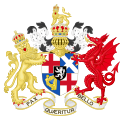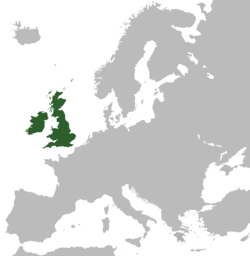English Protectorate
| Commonwealth of England, Scotland and Ireland | ||||||||||||
| Republic | ||||||||||||
|
||||||||||||
|
|
||||||||||||
|
Territory of Commonwealth in 1659
|
||||||||||||
| Capital | London | |||||||||||
| Languages |
English (official) Scots, Irish, Welsh, Cornish, Scottish Gaelic, Angloromani |
|||||||||||
| Religion | Calvinism , Protestantism and Puritans | |||||||||||
| Government | Unitary parliamentary republic | |||||||||||
| Lord Protector | ||||||||||||
| • | 1653–58 | Oliver Cromwell | ||||||||||
| • | 1658–59 | Richard Cromwell | ||||||||||
| Legislature | Parliament | |||||||||||
| • | Upper house |
Other House (1658–59) |
||||||||||
| • | Lower house |
House of Commons (1654–55/1656–58/1659) |
||||||||||
| History | ||||||||||||
| • | Instrument of Government | 16 December 1653 | ||||||||||
| • | Humble Petition and Advice | 25 May 1657 | ||||||||||
| • | R. Cromwell's resignation | 25 May 1659 | ||||||||||
| Currency | Pound sterling | |||||||||||
|
||||||||||||
| Today part of |
|
|||||||||||
The Protectorate was the period during the Commonwealth (or, to monarchists, the Interregnum) when England and Wales, Ireland and Scotland were governed by a Lord Protector. The Protectorate began in 1653 when, following the dissolution of the Rump Parliament and then Barebone's Parliament, Oliver Cromwell was appointed Lord Protector of the Commonwealth under the terms of the Instrument of Government. In 1659 the Protectorate Parliament was dissolved by the Committee of Safety as Richard Cromwell, who had succeeded his father as Lord Protector, was unable to keep control of the Parliament and the Army. This marked the end of the Protectorate and the start of a second period of rule by the Rump Parliament as the legislature and the Council of State as the executive.
Since 1649 and prior to the Protectorate, England, Ireland and later Scotland had been governed as a republic by the Council of State and the Rump Parliament. The , which established England, together with "all the Dominions and Territoryes thereunto belonging", as a republic, had been passed on 19 May 1649, following the trial and execution of Charles I in January of that year. All of Ireland came under the same governance (after the successful Cromwellian conquest of Ireland) with the appointment of a Parliamentary military governor in Dublin. Scotland was invaded, subjugated and placed under an English military governor first appointed in 1651.
...
Wikipedia



